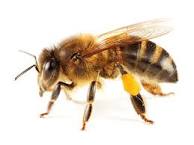Posts
HOW TO GET RID OF CARPENTER BEES
- Get link
- X
- Other Apps

Carpenter Bees Xylocopa species Carpenter Bee Carpenter bees, also known as wood bees, bear a resemblance to bumblebees but have a hairless abdomen. These solitary bees are named for their nesting behaviors of tunneling into wood. Carpenter Bee Habits Long Island, New York Eastern carpenter bees are all black, with yellow hair on their thorax and a smooth, shiny abdomen. Apart from bumblebee queens, they are the largest bees native to the United States. Unlike bumblebees, carpenter bees are solitary insects and do not live in large colonies. Female carpenter bees bore tunnels into wood to construct nesting galleries and deposit the chewed frass outside their burrows. The nesting behavior of carpenter bees weakens and damages wooden structures. Although solitary, carpenter bees create nests close to each other. Male carpenter bees do not possess a stinger but vigorously guard the nest's entrance, causing alarm in humans residing nearby. Carpenter bees hibernate during...
Wasps - Nassau County, Long Island, New York
- Get link
- X
- Other Apps
There is a great deal of concern about stinging flying insects in Nassau County, Long Island. Stinging pests commonly build their nests near Long Island dwellings, increasing the human occupant's risk of being stung. Wasps, in particular, pose some serious health concerns as they can be very aggressive and will sting people multiple times, which renders them as dangerous . WHAT IS A WASP? A wasp is a flying insect in the order Hymenoptera and suborder Apocrita, neither an ant nor a bee. The majority of wasps species are social insects that live in colonies, an example of which would be the yellow jacket wasps . However, there are many solitary wasps, such as the great black wasps and the cicada killer wasps . These solitary wasps often have parasitic tendencies (parasitoid wasps) and have adapted unique egg-laying techniques and methods of propagating their species. There are numerous types of wasps on Long Island , and like bees, wasps are crucial to the environment. Thi...
HOW TO GET RID OF BEES LONG ISLAND, NEW YORK
- Get link
- X
- Other Apps
If you have a bee, wasp, or hornet problem at your Long Island home, there is a good chance that you have researched how to get rid of these unwanted stinging flying insects. If you were considering a DO IT YOURSELF bee, wasp, or hornet removal, stop right where you are and contact Long Island Bee Removal . We have been leading Nassau County, Long Island, with the best live bee removal practices that are safe, humane, and effective. Long Island Bee Removal can save you time, and money and leave you with peace of mind. DO IT YOURSELF BEE, WASP & HORNET NEST REMOVAL Honey bee swarms are made up of tens of thousands of bees, and an established honey bee hive may contain 80,000 to 120,000 bees. Wasp and hornet nests contain hundreds to thousands of stinging flying insects. When threatened, bee, wasp, and hornet colonies can pose an imminent danger to humans. Bee, wasp, and hornet stings can be lethal to those who are allergic to their venom. H...
Types of Bees Long Island New York
- Get link
- X
- Other Apps

There are more than four hundred species of bees found in the state of New York. The majority of bees on Long Island, New York, are ground-nesting digger bees . While most bees on Long Island are ground-nesting, an example of which is bumblebees , several bees construct nests in above-ground structures. Above ground cavity nesters in New York include honey bees , wool carder bees , mason bees , carpenter bees , and resin bees . Honey Bee Honey Bees - The Honeybee is indigenous to Southeast Asia and was spread to four continents by humans. The honeybee is a social flying stinging insect, which lives in colonies and has three castes: queens, workers, and drones. In a honey bee colony, a fertilized egg can develop into a queen or a worker, dependent upon the diet provided to the developing bee larvae. Bee larvae destined to become queens are fed royal jelly , and larvae destined to become workers are fed bee bread . Drones develop from unfertilized eggs. Honeybees nest ...